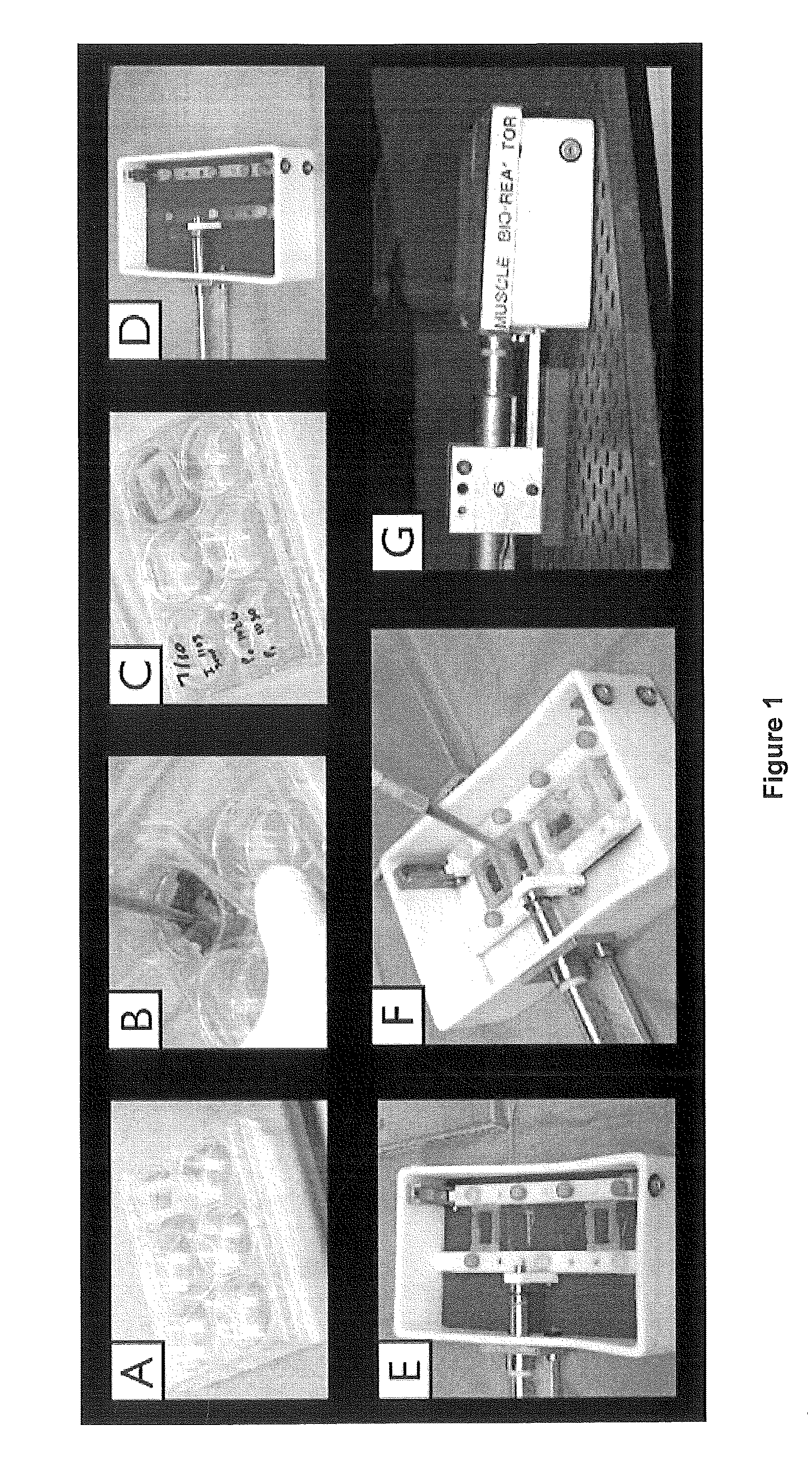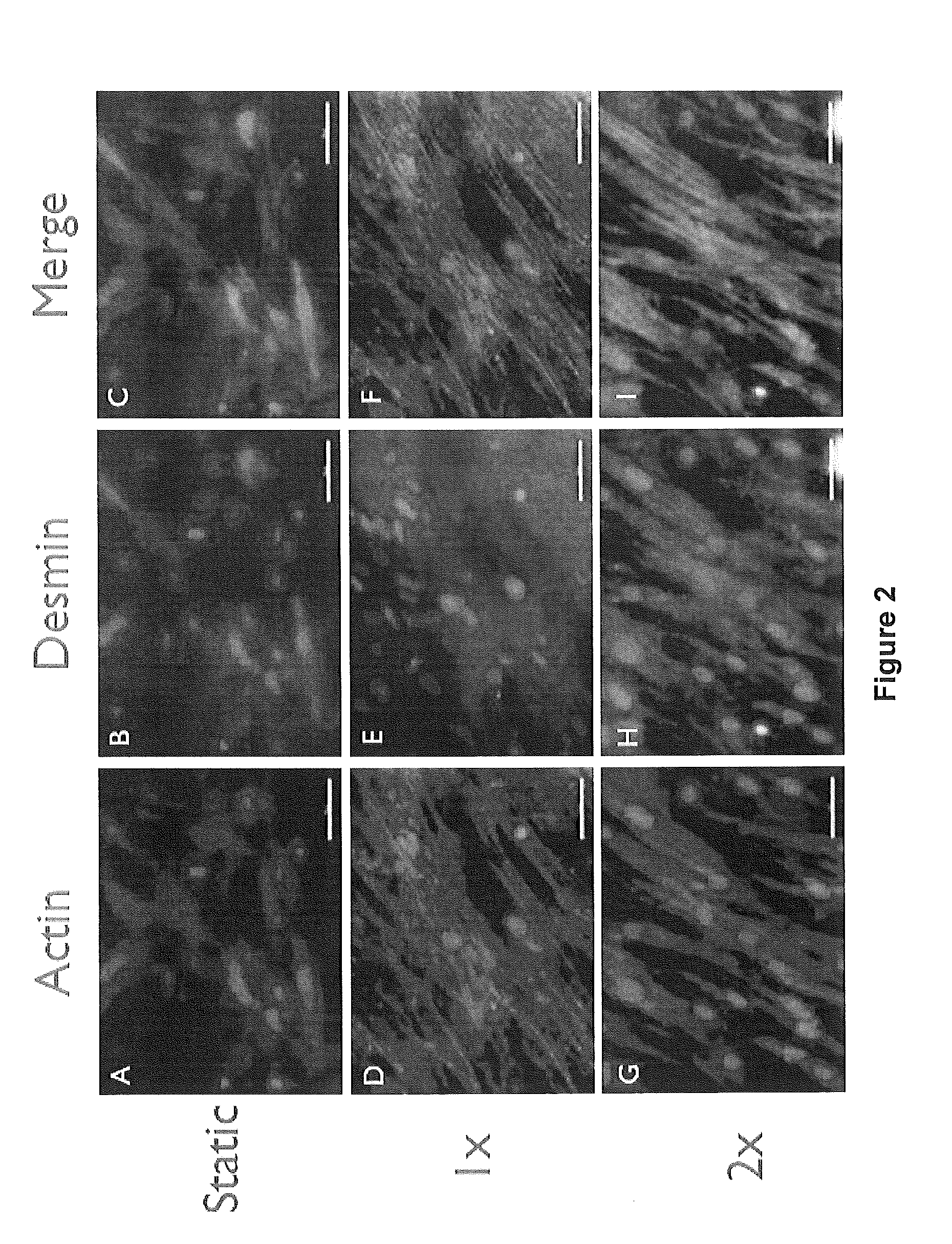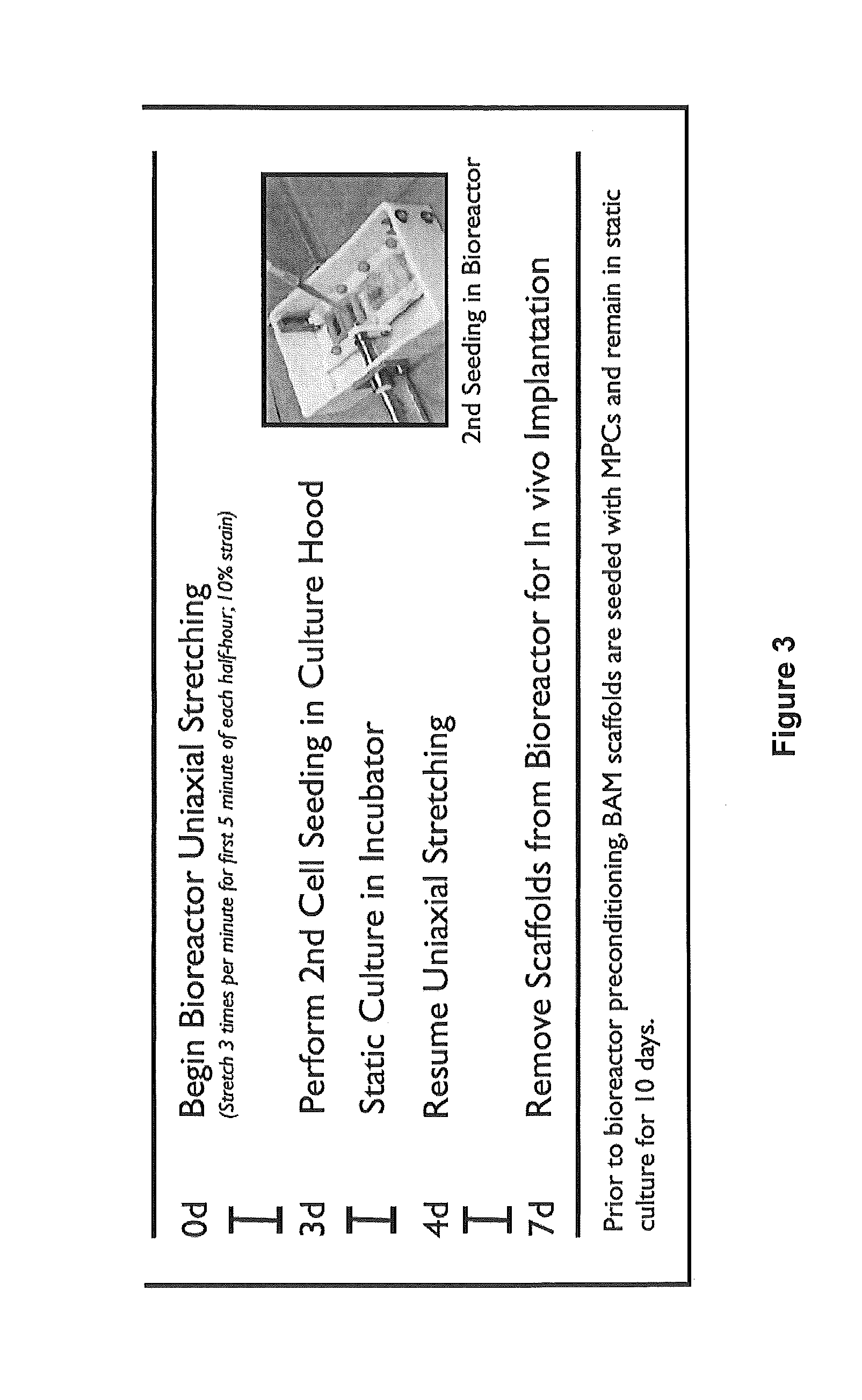Methods for making a tissue engineered muscle repair (TEMR) construct in vitro for implantation in vivo
a technology of skeletal muscle and tissue engineered muscle, which is applied in the direction of skeletal/connective tissue cells, prosthesis, ligaments, etc., can solve the problems of physiological deficit, inability to achieve effective clinical treatment, and inability to always achieve the approach, so as to increase the number of nuclei and increase the density
- Summary
- Abstract
- Description
- Claims
- Application Information
AI Technical Summary
Benefits of technology
Problems solved by technology
Method used
Image
Examples
example 1
Improvements to Muscle Bioreactor Conditioning to Form More Mature or “Native-Like” Skeletal Muscle Tissue
[0060]Development of a Methodology to Perform Multiple Cell Seeding on BAM Scaffolds in the Bioreactor.
[0061]As depicted in FIG. 1a-d, our previous seeding model involved pipetting cells onto a bladder acellular matrix (BAM) scaffold under static conditions and then placing the muscle construct in the bioreactor for preconditioning.
[0062]In order to perform a second seeding on BAM scaffold that has already undergone a period of bioreactor pre-conditioning, a technique was developed to seed the scaffold while it remains in the bioreactor (FIG. 1e,f). The primary challenge to this approach is ensuring optimal scaffold coverage and ample opportunity for cellular adherence. Light-weight (˜2 gram) silicon molds were constructed to create a custom seeding chamber within the bioreactor that constrains the muscle progenitor cell suspension to the top of each individual muscle construct....
example 2
Rodent Muscle Injury Model, Demonstrating that Improved Bioreactor Protocols In Vitro Lead to Accelerated Maturation and Improved Functional Outcomes In Vivo
[0089]Experimental Design.
[0090]Different strategies of culturing a mixed population of muscle precursor cells (MPCs) on bladder acellular matrix (BAM) collagen scaffolds were used to create tissue engineered muscle repair (TEMR) constructs with distinctly different morphological and protein expression characteristics. Briefly, one group of constructs experienced a short cellular proliferation and growth period, a second group experienced a prolonged cellular maturation period, and a third group was designed to reflect both of these conditions by applying a second population of MPCs to an underlying layer of maturing cells three days before implantation. Based on the culture and seeding conditions used to generate each construct type, the experimental groups are referred to as: Proliferation, Differentiation, and Mixed, respecti...
PUM
| Property | Measurement | Unit |
|---|---|---|
| time | aaaaa | aaaaa |
| time | aaaaa | aaaaa |
| time | aaaaa | aaaaa |
Abstract
Description
Claims
Application Information
 Login to View More
Login to View More - R&D
- Intellectual Property
- Life Sciences
- Materials
- Tech Scout
- Unparalleled Data Quality
- Higher Quality Content
- 60% Fewer Hallucinations
Browse by: Latest US Patents, China's latest patents, Technical Efficacy Thesaurus, Application Domain, Technology Topic, Popular Technical Reports.
© 2025 PatSnap. All rights reserved.Legal|Privacy policy|Modern Slavery Act Transparency Statement|Sitemap|About US| Contact US: help@patsnap.com



